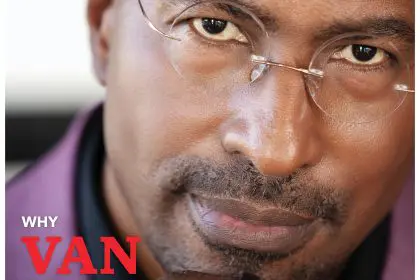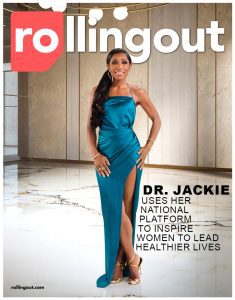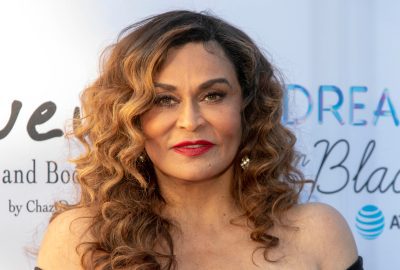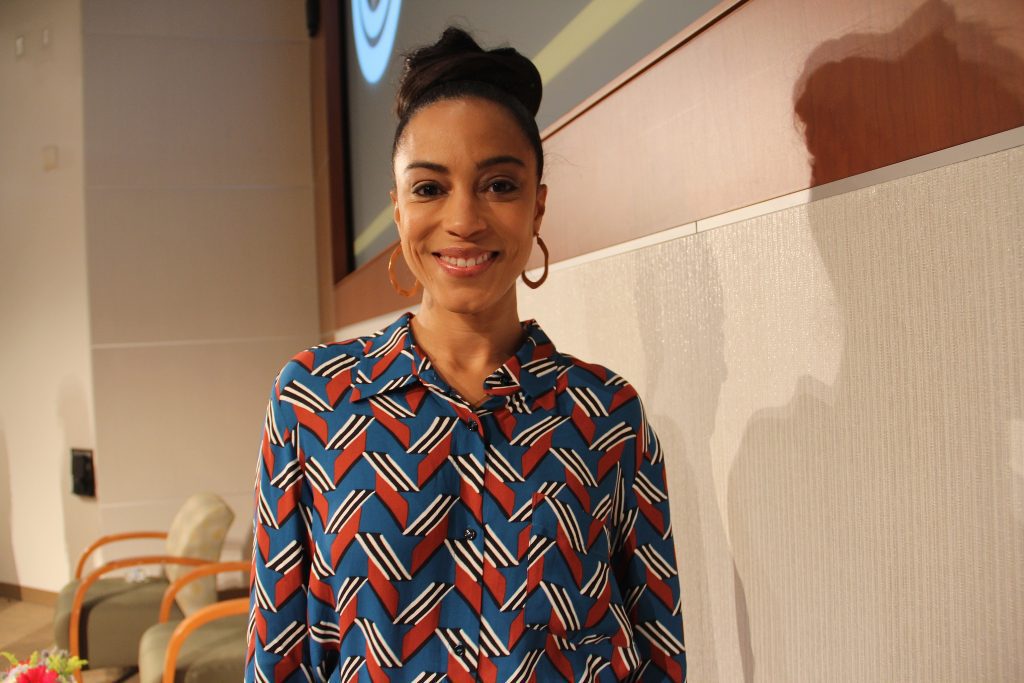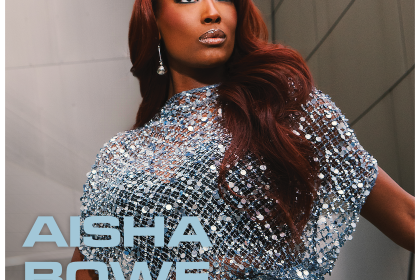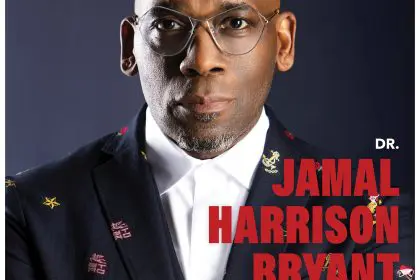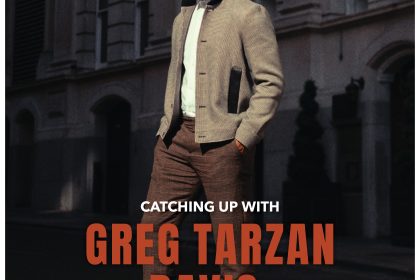Words by Terry Shropshire and Zondra Hughes On Sept. 10 — the day before the official 10th anniversary of the Sept. 11 terrorist attacks — Soledad O’Brien received a jolt in her private life.
On Sept. 10 — the day before the official 10th anniversary of the Sept. 11 terrorist attacks — Soledad O’Brien received a jolt in her private life.
She relayed the news on Twitter.
“Sad news,” O’Brien tweeted, “Dawn Spencer, our friend battling triple negative breast cancer, whom we profiled in ‘Black in America 2,’ has died. Sad, sad, sad.”
As an informer, O’Brien featured Lisa Newman, M.D., M.P.H., Cancer Center/Surgery, in “Black in America 2,” and focused on Newman’s research regarding breast cancer in African American women. In that series, O’Brien followed Dawn Spencer, one of Dr. Newman’s patients.
As a reformer it’s well known that O’Brien doesn’t just report the news; she researches it, she lives it, and she devotes private time beyond the newsroom — to it.
Triple negative breast cancer, the aggressive cancer that does not respond to traditional treatments, is one of the many causes that O’Brien reports on camera and supports in her real life.
Prior to Spencer’s death, O’Brien and philanthropist Malaak Compton Rock, the wife of comedian Chris Rock, lent their voices to My Work Butterfly, an organization devoted to finding a cure for the deadly form of breast cancer. Compton Rock hosted the event. O’Brien spoke to the more than 500 attendees on behalf of Nancy Block-Zenna of the Triple Negative Breast Cancer Foundation, who succumbed to the disease.
The glorious result of the cooperative effort; several breast cancer awareness organizations collaborated for a $6.4 million grant to fund a research team at the University of Alabama at Birmingham to advance promising treatments for triple negative breast cancer.
O’Brien’s reputation as a catalyst for change sweeps far and wide, from media circles to John Q. Public, to well within the halls of academia. In 2008, O’Brien was the first recipient of the Soledad O’Brien Freedom’s Voice Award from the Morehouse School of Medicine.
“The award was created to recognize her accomplishments and willingness to be a voice for the voiceless in our society, and her determination to cover stories that might otherwise go untold. It will be given annually to mid-career professionals who serve as catalysts for social change in their given fields,” according to a statement from the Morehouse School of Medicine.
In November 2008, the Johns Hopkins Bloomberg School of Public Health awarded the CNN anchor and special correspondent the Goodermote Humanitarian Award for her efforts while reporting on the devastating effects of Hurricane Katrina and the 2004 Asian tsunami.
“Ms. O’Brien has shown the world tragedies of human conflict, natural disasters, chronic and infectious diseases,” said Michael J. Klag, MD, MPH, Dean of the Bloomberg School of Public Health. “In addition to focusing attention on the people impacted, she has shed a light on how humanitarian efforts can help alleviate suffering and where current efforts have fallen short. Ms. O’Brien has challenged all of us to think and act in ways that offer humanitarian answers to the problems of the moment and the problems of the century, including public health issues.”
O’Brien’s work has been honored many times, including a local Emmy for her work co-hosting the Discovery Channel’s “The Know Zone.” Additionally, O’Brien is: the recipient of the NAACP President’s Award; a member of the National Association of Black Journalists, which named her the Journalist of the Year 2010, and a member of the National Association of Hispanic Journalists. She holds a seat on the board of directors for The After-School Corporation, a nonprofit organization dedicated to expanding educational opportunities for all students, and she serves on the board of directors for The Harlem School of the Arts. O’Brien was twice named one of Irish American Magazine’s “Top 100 Irish Americans” and she made Black Enterprise magazine’s 2005 Hot List. She has also been recognized as “Groundbreaking Latina of the Year” by Catalina magazine.
“My ethnic roots are relevant when you look at the broader picture of who brings us the news. Who you are matters oh so very much, when, according to the National Association of Hispanic Journalists just 6 percent of the people working in TV news and 4 percent of the newspaper reporters in this country are Latinos,” O’Brien says. “The NAHJ presents a report on media diversity called the “Brownout Report,” and it determined that less than 1 percent of the stories aired by the networks include Latinos, and that tiny amount is heavily concentrated on immigration, crime and drugs.
“I started seeing stories where I couldn’t affect the outcome. I covered the Asian tsunami, Katrina and the earthquake in Haiti. I felt like my role, my power, my strength, is in bringing these stories to the public, but how do I change the outcome? How do I find homes for 400,000 children? I can’t,” she continues.
“What I discovered is there were things I can do. My husband and I, after Hurricane Katrina and with the help of Kim Bundy, who is my best friend, our children’s godmother and a member of our board, started [finding] kids, young women especially, who really wanted to go to college and found because of a lack of resources they couldn’t.”
This year, the Soledad O’Brien Freedom’s Voice Award will be given to Ludacris for his philanthropic efforts.
O’Brien is also lending her voice and media access to tackle other diseases that are ravaging the black and brown female community at alarming rates — AIDS and heart disease.
Last year, O’Brien hosted the Latino Commission on AIDS’s annual benefit gala — Cielo Latino — at Cipriani Wall Street.
“I have covered HIV/AIDS stories many times throughout my career. The topic and our fight against the disease continues to be vitally important,” O’Brien said. “I am more than happy to do my part.”
The celebrated journalist has also worked with WomenHeart, and narrates a video concerning the disparities in health care for heart disease among women, which is the No. 1 one killer of American women.
The quality of life for poor women is also a high priority on O’Brien’s lengthy to-do list.
Quietly, O’Brien and her husband, Brad Raymond, have sponsored college scholarships for disadvantaged students. This year, the couple launched the nonprofit Soledad O’Brien & Brad Raymond Foundation, designed to “fill the gaps in available financial assistance and support.”
O’Brien is beloved, not only because of her credibility and the fact that she is so good at what she does — but she is quintessentially American.
She is black and Cuban, Hispanic, Irish and Australian, and bilingual. So it’s not just the fact that she is a person of color that minorities love her. As a woman and a minority, she can’t help but see the world through colored lenses. And her stories reflect that. After decades of suffering from informational malnutrition in the mainstream news media, minorities finally have a major American personality who presents African Americans and Hispanics with a sense of humanity and with insight into complex layers that make up our communities.
“I have a mass of kinky hair, light brown skin and lots of freckles. I’m black and Cuban, Australian and Irish, and like most people in America, I’m someone whose roots come from somewhere else. I’m a mixed race, first-generation American,” she writes for CNN.com.
Where was O’Brien’s next big story?
How about aboard a cruise ship? As the Tom Joyner Fantastic Voyage tore away from the Port of Galveston, Texas, and raced through the Caribbean Sea toward the Cayman Islands this past March, O’Brien was faced with a dilemma of sorts.
Here’s where O’Brien’s reputation as a nationally renowned, highly decorated journalist gets put to the test. It’s one thing to bring sobering stories before a rapt audience while they sit in front of a television set. But it takes a certain amount of professional conviction, skill and je ne sais quoi to be able to host a serious social-cultural topic aboard a vast vacation vessel coasting in the middle of the Gulf of Mexico.
On most cruise ships, people want to do anything but think, especially about the life from which they sought temporary asylum. But O’Brien not only held the audience’s attention during the screening of the CNN special “Black in America: Churched,” but, for a brief moment during the poignant discussion, some forgot they were on a luxury cruise liner.
That episode, taking place under much lighter circumstances and surroundings than O’Brien’s normal assignments for CNN, nevertheless illustrates O’Brien’s powerful gravitational pull on people of color to the projects she’s immersed in.
According to O’Brien, people are paying more attention to the new face of the general market. “You know, what they call the general market, I think is really today — because of the demographic change in America — is really black and brown people. We are the general market, and eventually everyone is going to come around and understand that,” O’Brien said at the AdColor Awards at the Beverly Hilton hotel in Beverly Hills in September. AdColor, which she hosted twice, works to increase diversity in the advertising, marketing and media industries.
“We buy more stuff, we over index on Twitter and Facebook and mobile devices. So I personally think that’s what we’re going to see in the future. … The best way to reach those audiences is to tell those stories emotionally to that audience. I see big changes coming.”
O’Brien is helping to bring about that change. Much of it through her work that humanizes individuals and puts faces on the devastating tragedies; and much of it, working with and representing major diversity organizations like the AdColor Coalition to make inroads in an almost homogenous environment on Madison Avenue. What is key is her willingness to use her resources to effect change in health, education and economic access.
“One of the things that I have discovered is that one individual can make a tremendous difference,” O’Brien says. “Someone can help someone else and take them across the finish line. I have seen it and we have done it in these 15 cases. You can literally change people’s lives by first paying for them to go to school and supporting their efforts as they go through school and push them across the finish line … sometimes you drag, you push, you cheer.”

